|
Ring-Mount Carbon Microphones-Page 1 |
|||
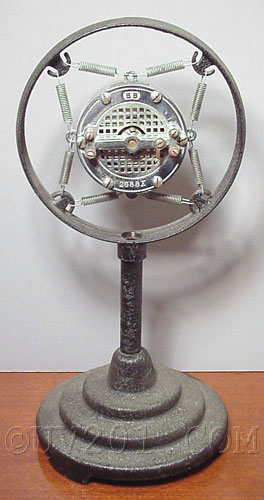 |
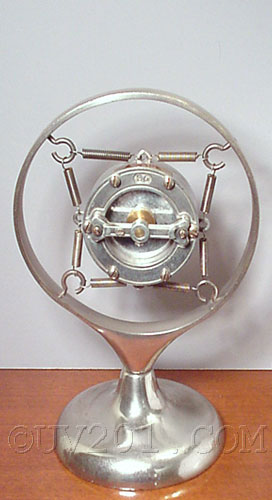 |
||
| One of the most
recognized images of early radio broadcasting was the ring-mount carbon
microphone. The microphone element itself was suspended by springs
to isolate it from noise and vibration. Carbon microphones had limited
frequency response and had an inherent hiss, but they had high output
levels and were low impedance devices. This meant that
they did not require additional amplification, and did not need
extensive shielding to prevent hum pickup.
Carbon microphones were really only popular for broadcast applications during the 1920's and were quickly abandoned as better technology became available. They remained popular, though, throughout the 1930's for public address and amateur radio use as a low-cost alternative to dynamic, condenser, or velocity type microphones. Shown above are two typical microphones from the early 1930's. The example on the left is a Universal model BB element on a Bud stand. The one on the right is a Continental model 25 element on a somewhat out-of-round stand of unknown make. Shown below is an Electro-Voice model 100-D element with its original box. |
|||
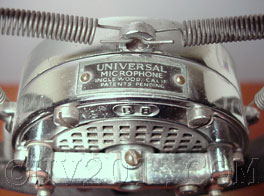 |
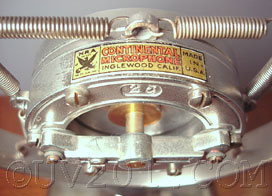 |
||
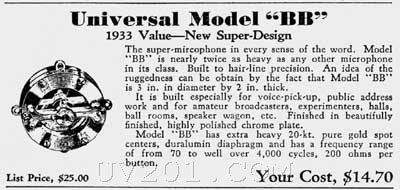 |
|||
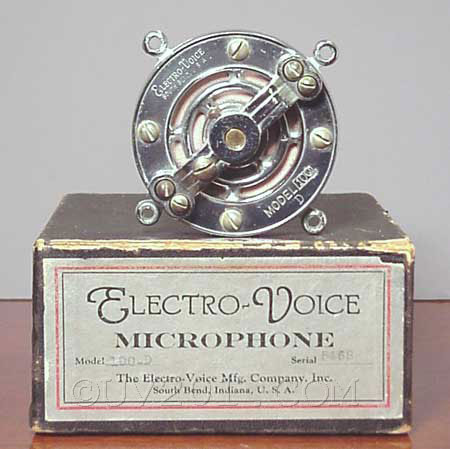 |
|||
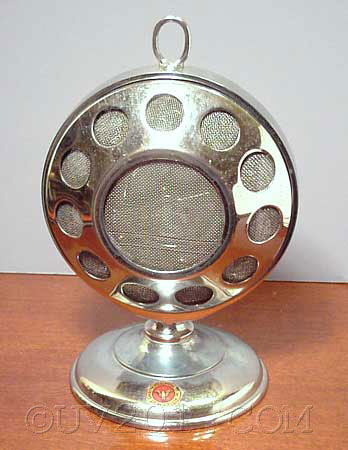 |
|||
| This is an American model EL double-button carbon microphone in a matching American enclosed desk stand. This was an inexpensive microphone appropriate for amateur or public address applications. The microphone itself cost about $5.00 in 1934, and the stand was an additional $3.25. | 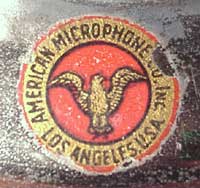 |
||
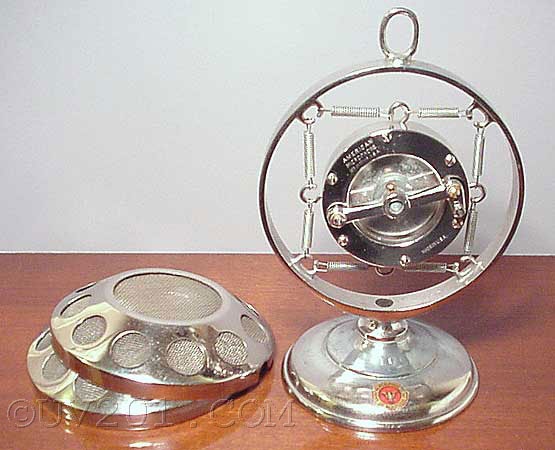 |
|||
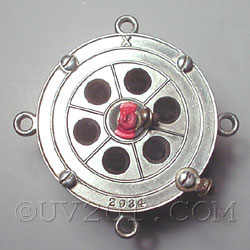 |
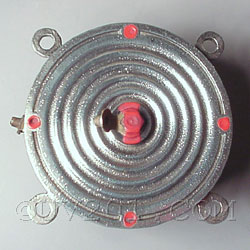 |
||
|
Universal Type "X" Double-Button Carbon Element-2 1/2 Inch Diameter |
|||
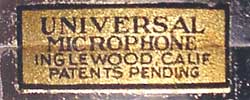 |
|||
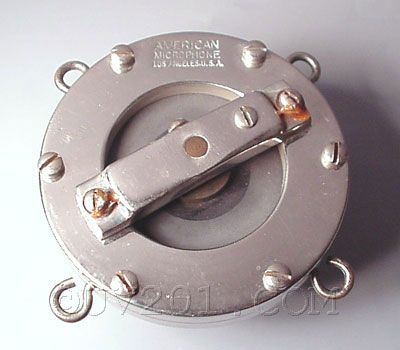 |
|||
|
American Double-Button Carbon Element-3 1/8 Inch Diameter (Model Unknown) |
|||
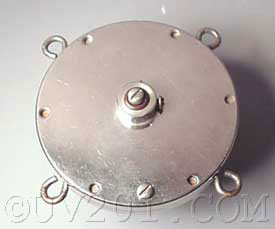 |
|||
| Next Page | |||